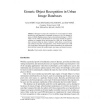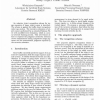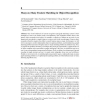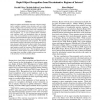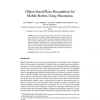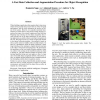CCIA
2009
Springer
14 years 8 months ago
2009
Springer
In this paper we propose the construction of a visual content layer which describes the visual appearance of geographic locations in a city. We captured, by means of a Mobile Mappi...
MVA
1996
14 years 8 months ago
1996
An adaptive object recognition scheme for image sequences of many object scenes is described. The scheme is applied for t r d c object recognition under ego-motion. The recursive ...
DPC
1996
14 years 8 months ago
1996
Retrieving images from very large collections, using image content as a key, is becoming an important problem. Users prefer to ask for pictures using notions of content that are st...
SIP
2003
14 years 8 months ago
2003
We describe the establishment of a compound object model for object recognition purposes which provides the frame for the extraction of object structure from images degraded by no...
DAGSTUHL
2006
14 years 8 months ago
2006
One of the bottlenecks of current recognition (and graph matching) systems is their assumption of one-to-one feature (node) correspondence. This assumption breaks down in the gener...
AAAI
2004
14 years 8 months ago
2004
Object recognition and detection represent a relevant component in cognitive computer vision systems, such as in robot vision, intelligent video surveillance systems, or multi-mod...
NIPS
2008
14 years 8 months ago
2008
We present a discriminative part-based approach for human action recognition from video sequences using motion features. Our model is based on the recently proposed hidden conditi...
IJCAI
2007
14 years 8 months ago
2007
In this paper we extend Active Monte Carlo Recognition (AMCR), a recently proposed framework for object recognition. The approach is based on the analogy between mobile robot loca...
CCIA
2008
Springer
14 years 9 months ago
2008
Springer
Object recognition has been widely researched for several decades and in the recent years new methods capable of general object classification have appeared. However very few work ...
AAAI
2008
14 years 9 months ago
2008
When building an application that requires object class recognition, having enough data to learn from is critical for good performance, and can easily determine the success or fai...
